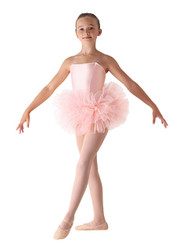What are the Different Styles of Tutus?
By Move Dance on 16th May 2019
When you think of a tutu, you probably conjure up images of dainty ballerinas twirling across the stage in layers and layers of tulle. Tutus are certainly the symbol of ballet dancing for many and the epitome of ballet success for some dancers is the day your dance teacher tells you that you get to wear a tutu in the upcoming show. Tutus truly do feel like a rite of passage in the dance world. Little ballerinas dream of pink powder puff tutus that they can wear for dance but tonnes of little girls also love a tutu just for dress-up. But what's the real purpose of a tutu, and who first introduced them to the dance scene? Keep reading to find out.
What is a Tutu?
A tutu is like a skirt or a dress and is usually worn by female ballet dancers. It comes in two main forms: a tutu skirt or a tutu with an attached bodice. Wearing a tutu in ballet draws attention to your legs, emphasising your leg movements. The word "tutu" is actually derived from a French word referring to a lady's bottom and it's believed that tutus were invented in a bid to protect the modesty of female dancers. A tutu is often made of layers of tulle or netting to create a lightweight skirt that magnifies the grace and beauty of a ballerina. We sell both tutu skirts with harmonising tutu leotards and also tutu dresses that come with the bodice conveniently attached.
Looking After Your Tutu
Tutus can be very expensive purchases, which is why we designed our own cheap tutus by Alegra in a range of beautiful colours and styles for your dance shows. Our dance tutu range comes in under £75, giving you a show-ready look or the perfect base to build your own design upon with items like gems from our costume customisation collection. You should carefully look after your short tutu and protect its tulle layers by always ensuring that you store your tutu upside down; properly storing your tutu in the correct position means that gravity won't pull the layers of the tutu down, so it should stay in its intended upright position. Tutus can snag very easily, so it's important to keep away any rough jewellery that may catch and pull the fabric. You should only wipe clean your tutu by hand if you get any dirt on it, so remember that when you're about to eat a chocolate bar whilst in costume!
History of the Tutu
There are lots of different theories though about the origins of the dance tutu, but generally tutus are believed to have been designed in the early 1800's to both protect the modesty of female dancers from the upward viewing of audiences in the stalls below and also to emphasise their intricate footwork. It's thought that Marie Taglioni was the first ballerina to wear a romantic tutu on stage in 1832 for La Sylphide at the Paris Opera, scandalously showing off her ankles for the first time.
Evolution of the Tutu
As hemline fashion has increasingly got shorter and shorter, so has the tutu. Styles of tutus have changed from long, soft, flowing skirts with a full silhouette to update to firmer styles that are designed to leave the dancer's legs in full view. Pancake and platter tutus became very common, but some choreographers like Akram Khan have worked with costumers to really choose the perfect tutu to represent the character, as opposed to simply showing or concealing legs and footwork.
What are the Different Styles of Tutus?
Romantic Tutus
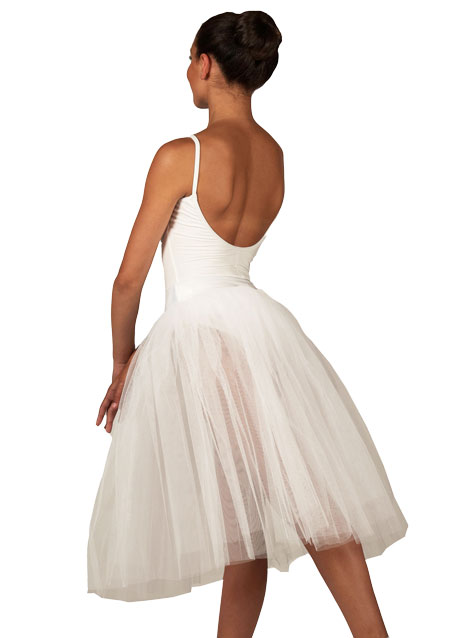
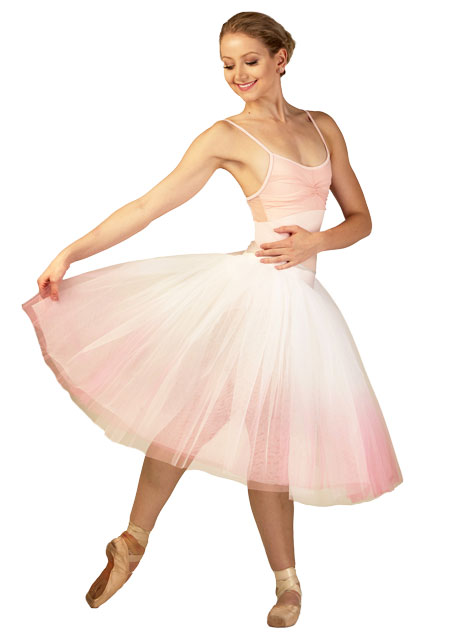
Romantic tutus come in two styles, either Classical romantic or Neo-classical romantic. Classical romantic tutus are made with the tulle falling from the waist, whereas Neo-classical tutus are made with tulle falling from the hips. Soft, downward flowing tulle layers that fall between the knee and ankle. Think Giselle & La Sylphide for examples of these romantic tutu shapes. Romantic tutus are often interchangeably referred to as Juliet tutus - both names are beautiful, so it's up to you which you choose.
Pancake Tutus
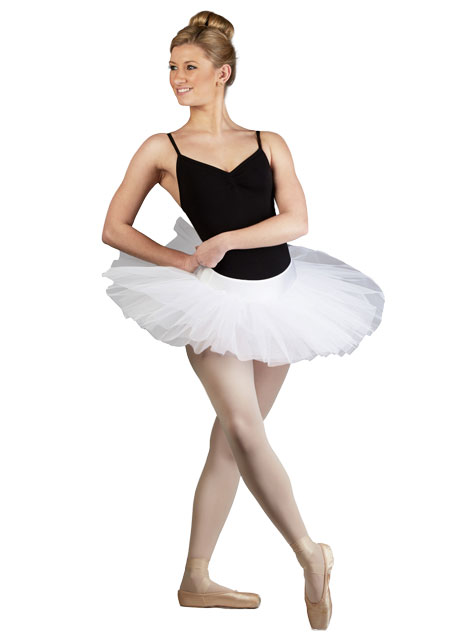
Pancake tutus are our personal favourites for their shape being instantly synonymous with images of modern ballet. This style of Classical tutu emerged after the Romantic period and is known for its several, short stiff layers of tulle that create a horizonal tutu extending from the waist of hips. These short, stiff layers create a tight tutu that gives a sprightly appearance that's truly befitting of dance characters like the Sugar Plum Fairy. They usually have between 9-12 stiff tulle layers.
Bell Tutus
Bell tutus sit at a mid-thigh length and are usually tightly gathered. They get their shape from the lack of a wired hoop, giving a softer and fuller appearance than their Romantic tutu origins. For an example, think of the costumes worn in La Bayadere. Bell tutus aren't as popular as Romantic tutus.
Powder Puff Tutus / Balanchine Tutus
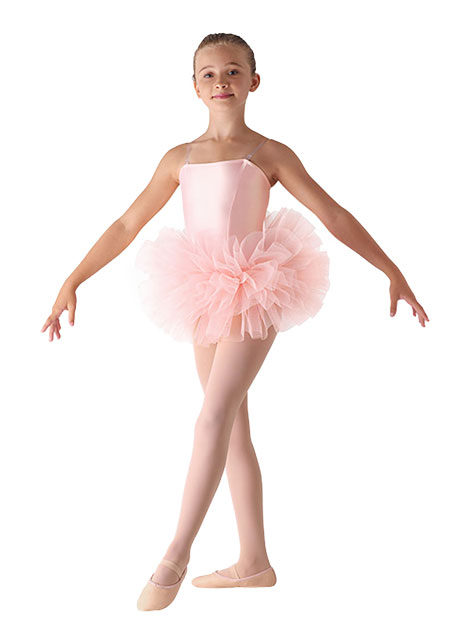
Barbara Karinska, costumer for the New York City Ballet and original creator of this Balanchine style, is still world-renowned as the best tutu maker in history for her both beautiful and durable designs. Powder puff tutus aren't wired in order to give them a softer and fuller appearance. They're popular for their cute appearance but their main purpose is that the short tulle layers allow full visibility of a dancer's legs.
Platter Tutus
Platter tutus are often custom-made, so we don't actually hold any in stock here at Move Dance. Dancers or the Costume Department will usually order the tutu to be decorated in a specific way for the purpose of a show. A platter tutu is short with no pleats and has the top layer decorated - this top layer of decoration is what gives the tutu its name.
Why wear a Practice Tutu?
Good to practice the show dance with partner to incorporate the correct distances that will be created from the tutu. Adjusting choreogrpahy distancing when tutu is included in the routine.
References:
- https://www.tutusandtextiles.co.uk/tutus/tutu-specifications/
- https://blogpnborg.wordpress.com/2016/07/09/wardrobe-types-tutus/
- http://www.classacttutu.com/
- http://www.classacttutu.com/tutus/tutu-skirt-styles/romantic-tutu-skirt-33.html
- http://www.ballet-pointe.com/Tutus.html
- http://thedancewearguru.blogspot.com/2014/11/all-about-tutus.html
- https://www.everydayballet.com/tutus-brief-history/

